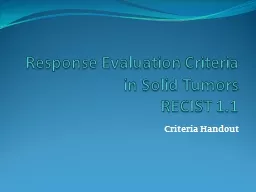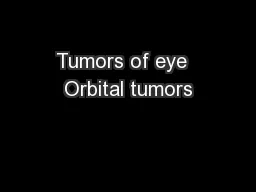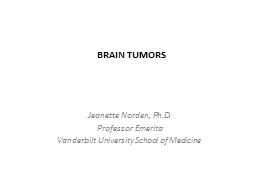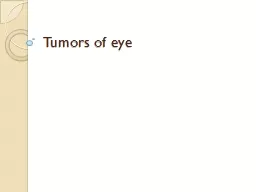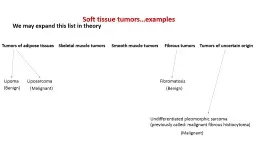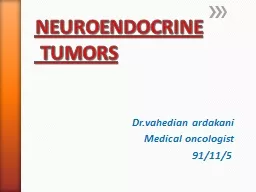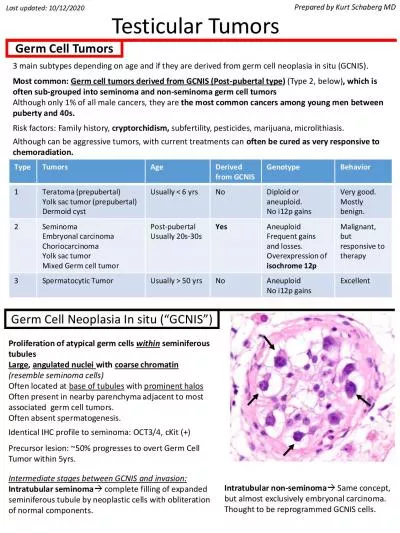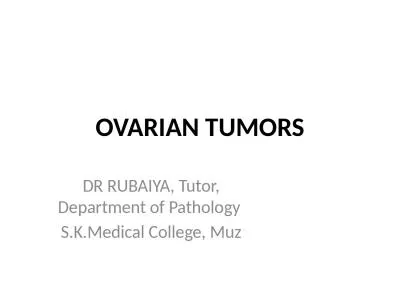PPT-Response Evaluation Criteria in Solid Tumors
Author : karlyn-bohler | Published Date : 2020-04-03
RECIST 11 Criteria Handout Basic Paradigm Assess at baseline Look for measurable lesions Select target and nontarget lesions Measure target lesions Followup evaluation
Presentation Embed Code
Download Presentation
Download Presentation The PPT/PDF document " Response Evaluation Criteria in Solid T..." is the property of its rightful owner. Permission is granted to download and print the materials on this website for personal, non-commercial use only, and to display it on your personal computer provided you do not modify the materials and that you retain all copyright notices contained in the materials. By downloading content from our website, you accept the terms of this agreement.
Response Evaluation Criteria in Solid Tumors: Transcript
Download Rules Of Document
" Response Evaluation Criteria in Solid Tumors"The content belongs to its owner. You may download and print it for personal use, without modification, and keep all copyright notices. By downloading, you agree to these terms.
Related Documents

